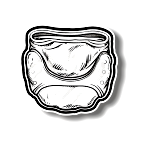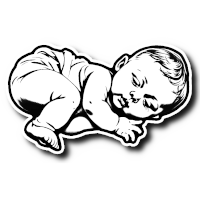
Bright Eyes: High-Contrast Images for Your Baby's Brain
Welcome to Bright Eyes – a free app and website that provides hundreds of high-quality, high-contrast images to help stimulate your baby's brain.
Scientific studies have shown that exposure to high-contrast images can can help improve your baby's visual acuity and cognitive development, which is why we've made it our mission to make these images accessible to all parents for free.
We offer a wide variety of images, from animals to shapes to objects, all designed to capture your baby's attention and help them learn. And best of all, our app and the printouts are absolutely free and contain no ads.
Download Bright Eyes today and give your baby the gift of early learning!
Download a printable version
Instead of charging up to $15 for high-contrast images, we made hundreds of our handcrafted high-contrast images completely free. It was really important to us that every family could access them regardless of their financial situation. As parents ourselves we know how quickly our little ones can become expensive!
Choose whether you'd like your images on a dark or light background, print them, cut them into separate cards, and entertain your little one.







